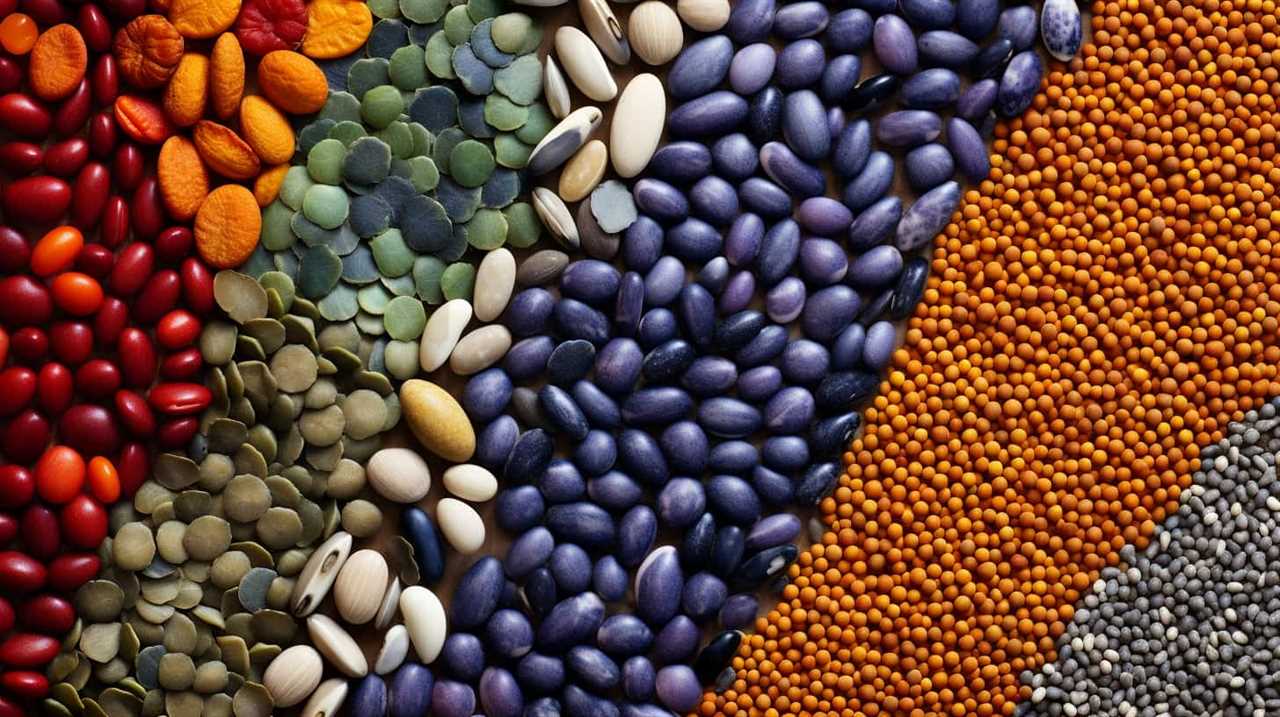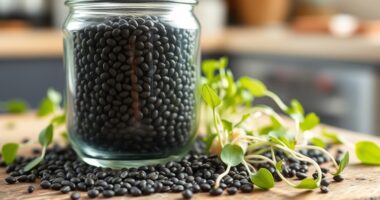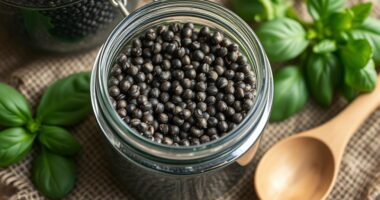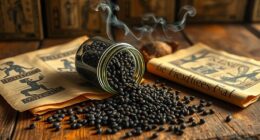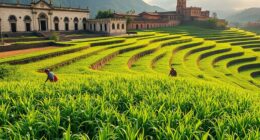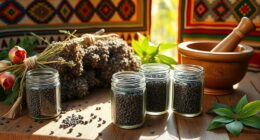Seeking to broaden our understanding and provide our audience with the newest techniques for collecting edible seed types, we introduce a thorough guide.
In this article, we will explore the most effective techniques for selecting, planting, and maintaining chia seed varieties.
Discover how to create optimal growing conditions and successfully harvest ripe chia seeds.
Additionally, we will delve into the necessary steps for processing and storing these nourishing seeds, ensuring they remain consumable for extended periods.
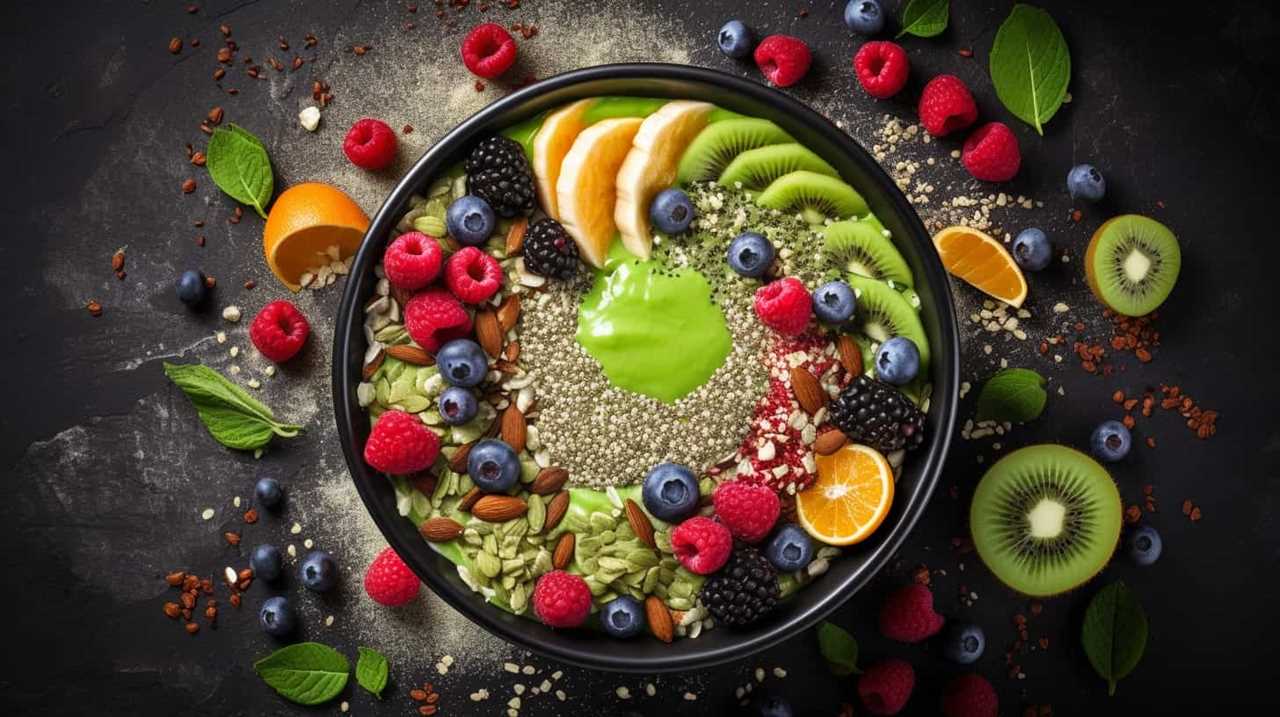
Key Takeaways
- Wait for chia plants to fully mature and seeds to turn dark
- Gently rub seed heads between fingers to collect mature seeds
- Cut seed heads and hang them upside down for natural drying
- Maximize chia seed yield through effective harvesting techniques
Selecting the Right Chia Seed Varieties
In our search for the best chia seed varieties, we’ve found that selecting the right ones requires careful consideration and thorough evaluation.
When it comes to choosing chia seeds, it’s crucial to take into account their health benefits and the sustainable farming practices used for their production. Chia seeds are well-known for their nutritional value, as they’re packed with omega-3 fatty acids, fiber, and antioxidants. These health benefits make them an excellent addition to a balanced diet.
Additionally, selecting chia seeds that are produced using sustainable farming practices ensures that the environment is protected and that the seeds are grown without the use of harmful chemicals or pesticides.
Preparing Soil and Planting Chia Seeds
To ensure successful growth, we regularly prepare the soil and plant chia seeds using proven methods. Proper soil preparation is crucial for providing the ideal conditions for chia seeds to thrive. We begin by removing any weeds or debris from the planting area and then loosening the soil with a garden fork or tiller. This helps to improve drainage and allows the roots to penetrate easily. Adding organic matter such as compost or well-rotted manure can enhance the soil’s fertility and water retention capabilities. Before planting the chia seeds, we ensure that the soil is moist but not waterlogged. We sow the seeds at a depth of approximately ¼ inch and space them about 12 inches apart. Regular watering and providing adequate sunlight are essential for the germination and growth of chia seeds.
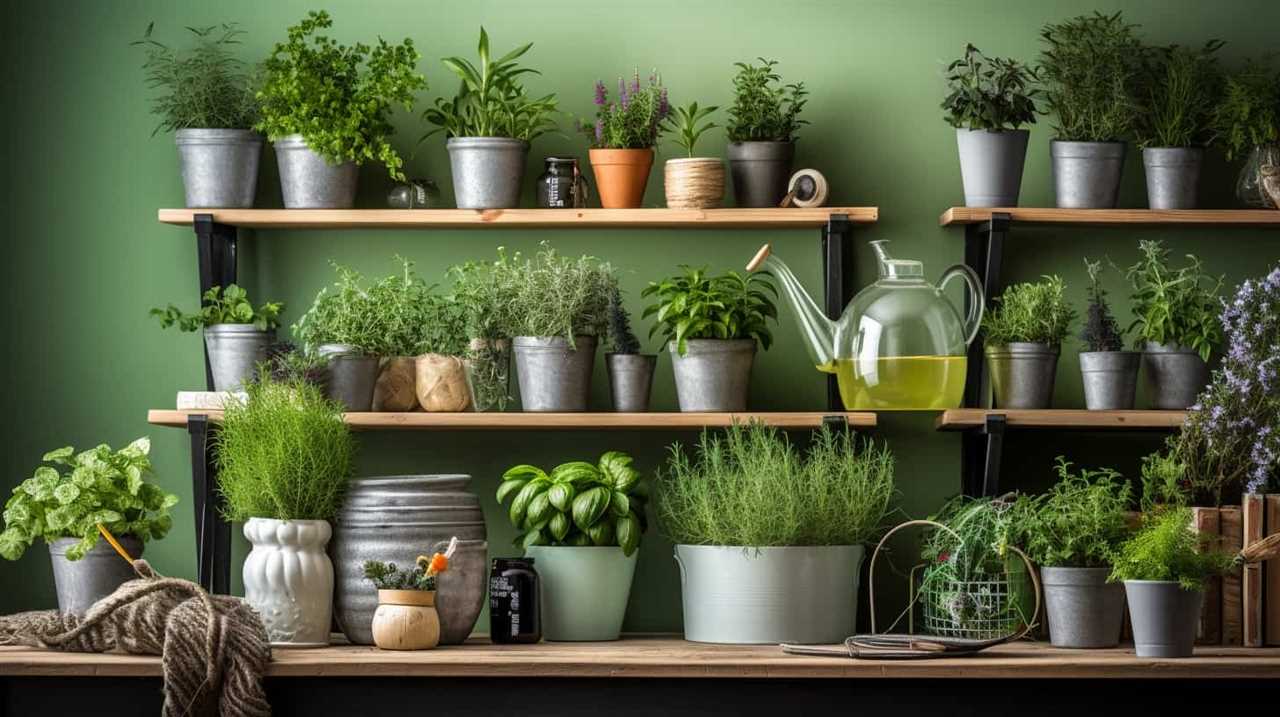
| Soil Preparation | Chia Seed Planting Techniques |
|---|---|
| Remove weeds and debris from the planting area | Sow seeds at a depth of ¼ inch |
| Loosen the soil with a garden fork or tiller | Space seeds about 12 inches apart |
| Add organic matter for improved fertility | Ensure soil is moist but not waterlogged |
| Provide regular watering and adequate sunlight | Monitor for germination and growth |
Maintaining Optimal Growing Conditions
To ensure the continued success of our chia seed growth, we prioritize maintaining optimal growing conditions. Preventing common seed diseases and maximizing seed germination are key factors in achieving this goal.
We start by selecting disease-resistant seed varieties, ensuring that they’re of high quality and free from any potential pathogens. Proper storage of seeds in a cool and dry environment helps to maintain their viability and prevent the onset of diseases.
Additionally, we monitor the moisture levels in the growing medium to prevent overwatering, as excess moisture can lead to fungal infections. Adequate spacing between plants allows for good air circulation, reducing the risk of disease transmission.
Regular inspection and prompt removal of any diseased plants or weeds further contribute to maintaining optimal growing conditions. By following these practices, we can ensure healthy and productive chia seed crops for our customers.
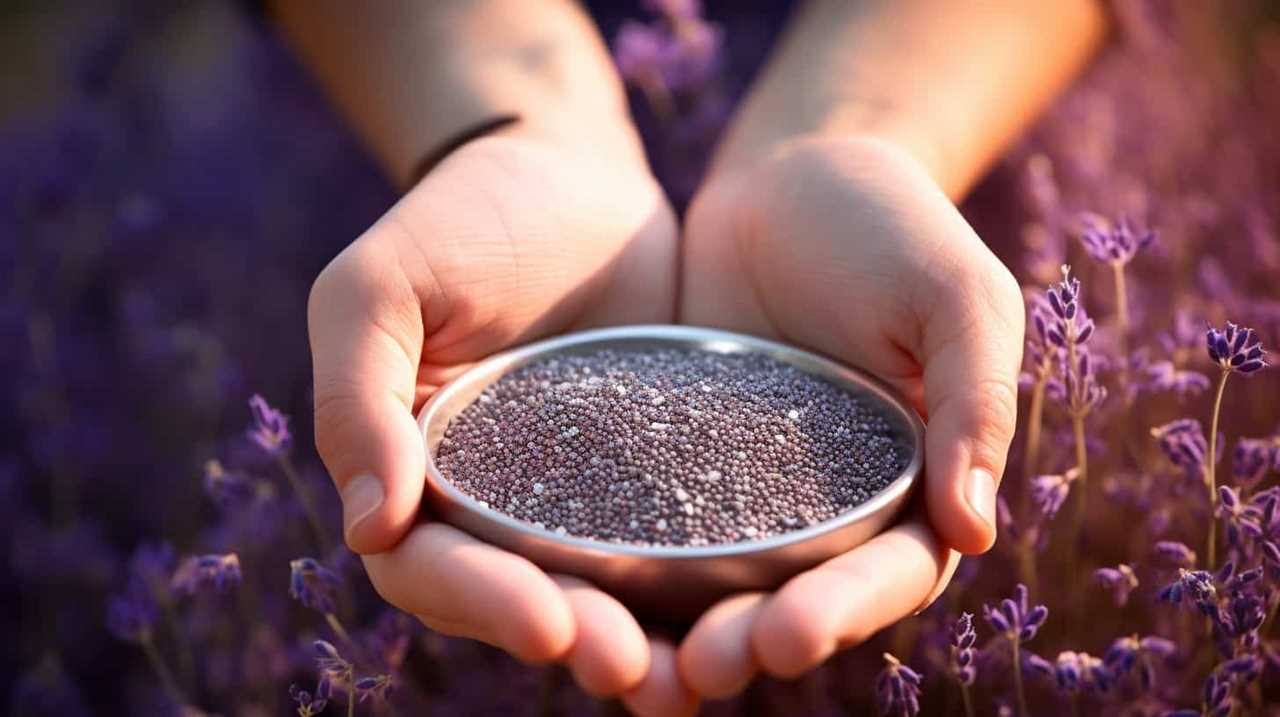
Harvesting and Collecting Ripe Chia Seeds
After maintaining optimal growing conditions, we move on to discussing the next step in the process: harvesting and collecting ripe chia seeds. To ensure a successful harvest, it’s essential to employ effective chia seed harvesting techniques in order to maximize chia seed yield.
One common technique is to wait until the chia plants have fully matured and the seeds have turned a dark color. This indicates that the seeds are ripe and ready for harvest. To collect the seeds, gently rub the seed heads between your fingers, allowing the mature seeds to fall into a container.
Another approach is to cut the seed heads and hang them upside down in a well-ventilated area to allow for natural drying and seed release.
Processing and Storing Consumable Chia Seeds
Our preferred method for processing and storing consumable chia seeds is by using airtight containers to maintain their freshness and nutritional value.
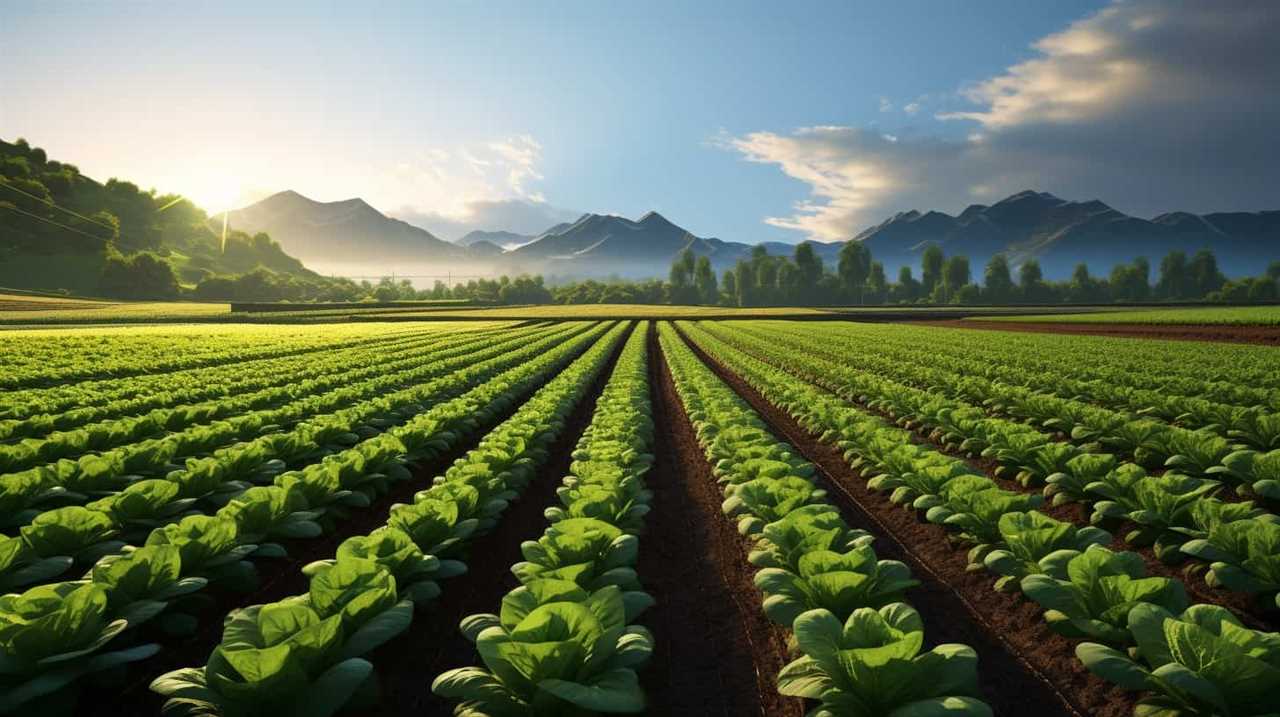
Chia seeds are packed with essential nutrients, including omega-3 fatty acids, fiber, and antioxidants. To preserve these valuable nutrients, it’s crucial to protect the seeds from exposure to light, heat, and moisture.
Airtight containers create a barrier that prevents oxygen and moisture from entering, ensuring that the chia seeds remain in optimal condition. It’s also important to store chia seeds in a cool, dark place, away from direct sunlight. This helps to maintain their nutritional integrity and prevent them from becoming rancid.
Frequently Asked Questions
How Long Does It Take for Chia Seeds to Germinate After Planting?
Chia seeds typically take 7-14 days to germinate after planting. Incorporating chia seed benefits, we can optimize the process by following best practices for growing chia seeds indoors, ensuring a successful harvest.
Can Chia Seeds Be Grown Indoors in Pots or Containers?
Growing chia seeds indoors in pots or containers offers numerous benefits. It provides convenience, control over growing conditions, and the ability to grow in limited spaces. It’s a sustainable and satisfying way to cultivate these nutritious seeds.
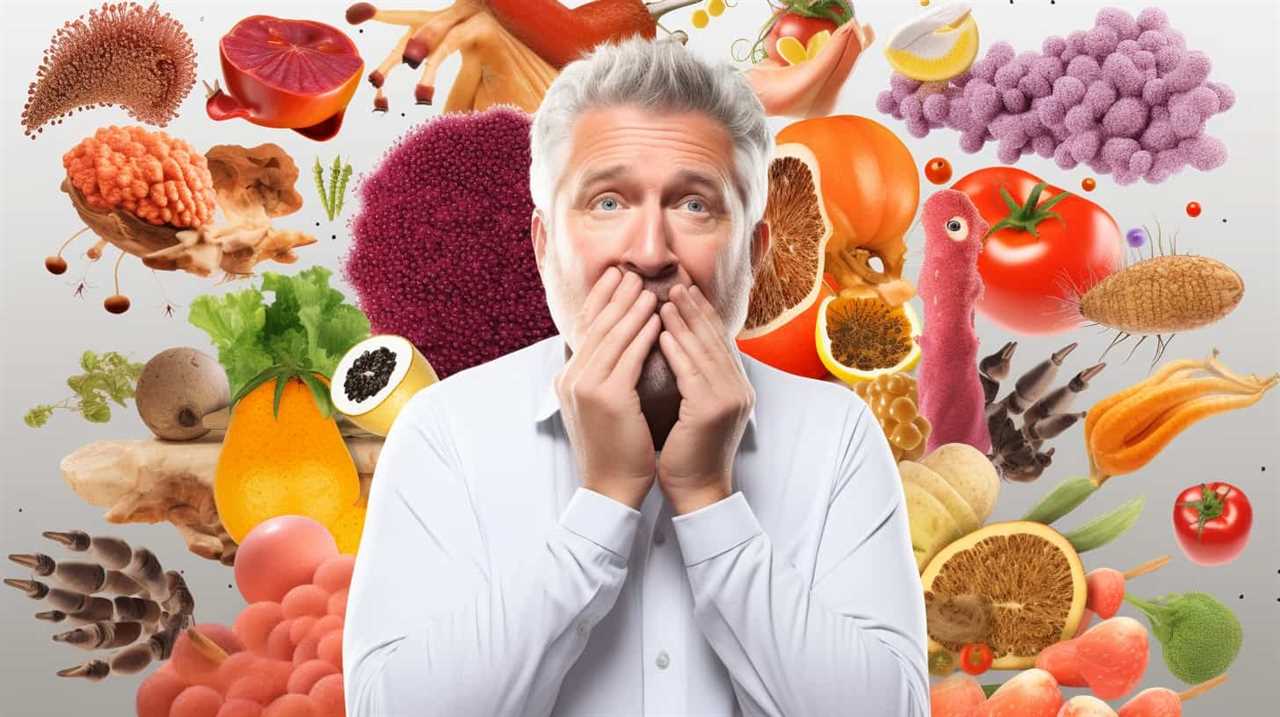
Are There Any Specific Pests or Diseases That Commonly Affect Chia Plants?
We implement effective pest management strategies to combat common diseases in chia plants. By identifying and addressing specific pests and diseases, we ensure the health and productivity of our chia plants.
What Are Some Common Signs That Chia Seeds Are Ready to Be Harvested?
When chia seeds are ready to be harvested, common signs include a dry and brittle seed head, brown or black coloration, and the seeds easily falling off. To prolong freshness, store in a cool, dry place.
Are There Any Special Precautions or Storage Requirements for Keeping Chia Seeds Fresh and Consumable for a Longer Period of Time?
To prevent chia seed spoilage and ensure longer freshness, it is important to follow best practices for storage. Keep chia seeds in airtight containers, away from heat and light, to maintain their nutritional value and extend their shelf life.
Conclusion
In conclusion, by carefully selecting the right chia seed varieties, preparing the soil, maintaining optimal growing conditions, and effectively harvesting and processing the ripe seeds, one can ensure the production of high-quality consumable chia seeds.
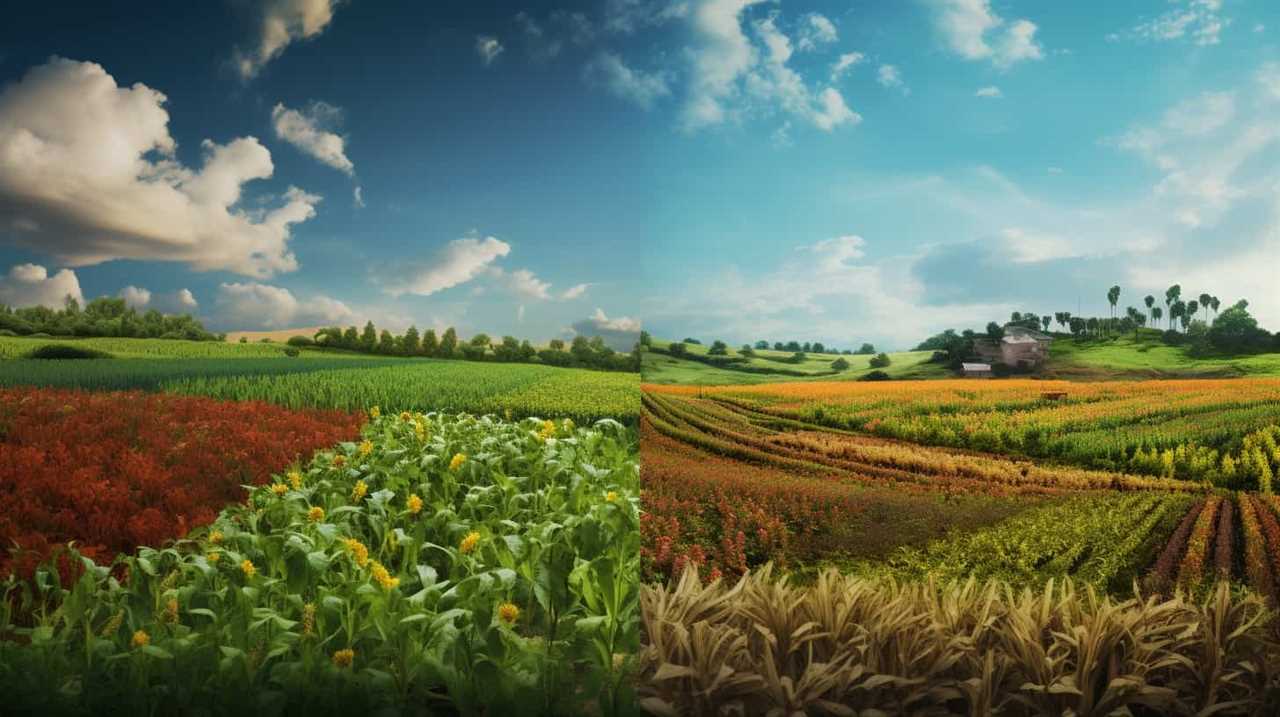
Interestingly, studies have shown that chia seeds contain an impressive 20% protein content, making them a valuable source of nutrition for those seeking a plant-based protein option.
With proper cultivation techniques, the potential for sustainable seed production is vast.
